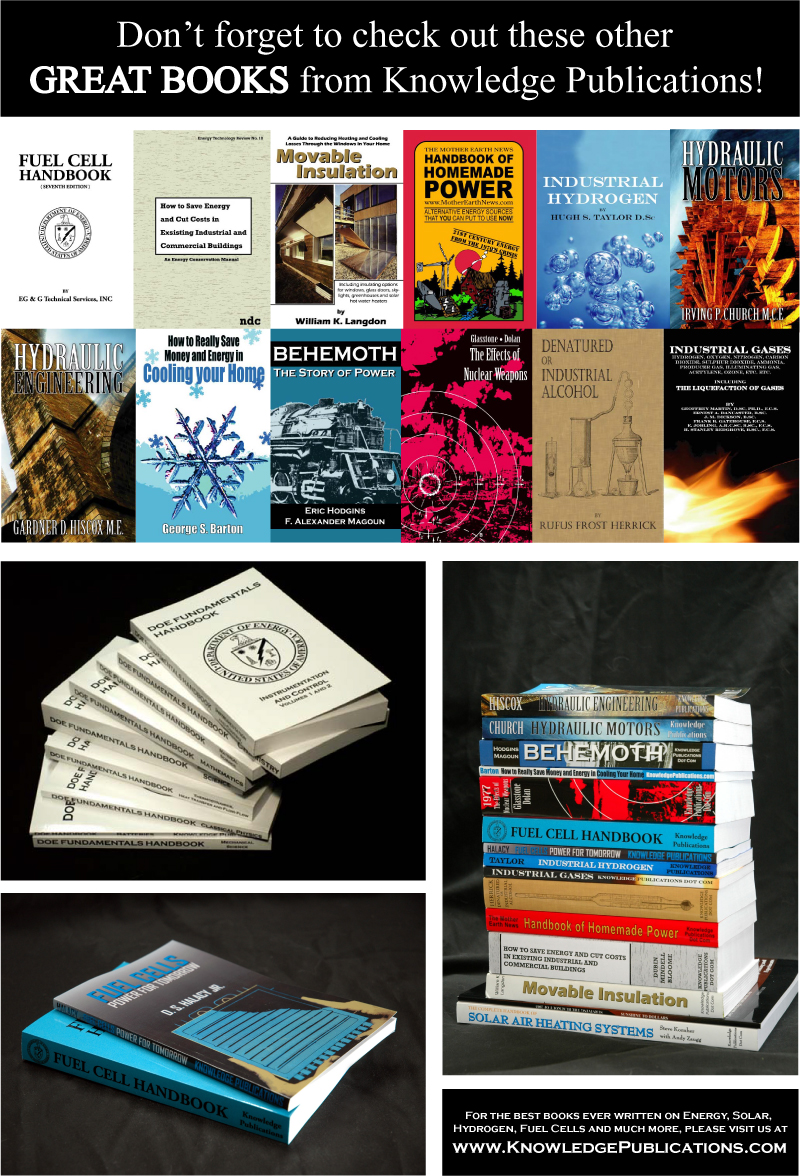Homeland Security and Civil Defense
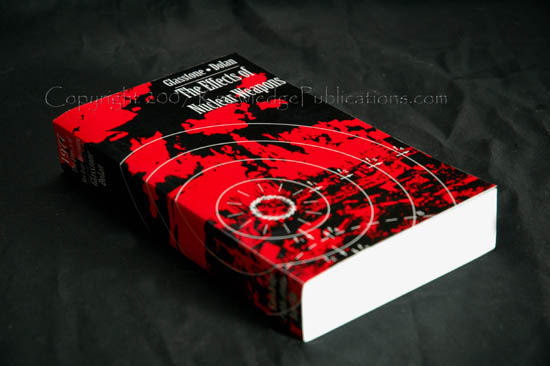
The Effects of Nuclear Weapons—Glasstone and Dolan $77.99
The classic book on the effects of Nuclear Weapons, written with extreme scientific detail, is a MUST HAVE for anyone working in Homeland Security, Emergency Services or in any other Civil Defense capacity. The Effects of Nuclear Weapons also comes with the bomb computer!! With the book and the circular bomb computer (similar to a circular slide ruler) you can KNOW the effects of a weapon at any distance, including blast speed, overpressure, prompt radiation, thermal radiation, fall out values and timeline, along with everything else. It can even tell you potential crater sizes. The reverse is true as well. If terrorists were to set off a nuke on the ground, measurement of the crater would indicate the yield of the weapon used. Glass windows broken at X miles away would also indicate the yield of the device with this book and the bomb computer. This book is especially important for information services that must be able to provide accurate information in the aftermath of a NUCLEAR ATTACK. If you want to know what a 5 Kiloton stolen Soviet suitcase nuke would do, this book will tell you without requiring that you know everything that nuclear scientists know. Knowledge Publications is PROUD and HAPPY to put this book back into print at the high quality that we demand of ourselves. We are also delighted to provide the Bomb Computer to our customers. The Bomb Computer comes in a kit form. You just have to cut it out and fold it. It’s really easy—does not take a nuclear scientist to do it :)
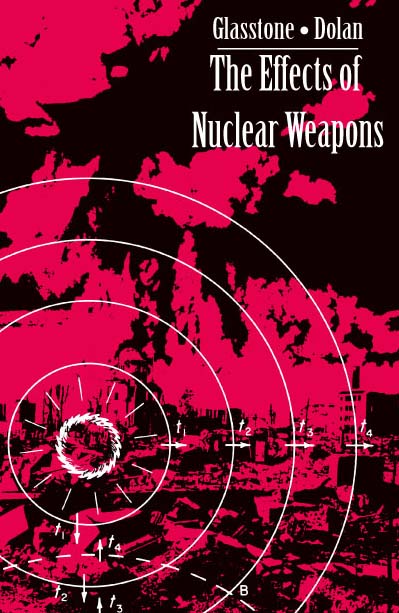
The Effects of Nuclear Weapons
● Third Edition ● Prepared and published by the United States Department of Defense and the Energy Research and Development Administration
When "The Effects of Atomic Weapons" was published in 1950, the explosive energy yields of the fission bombs available at that time were equivalent to some thousands of tons (i.e, kilotons) of TNT. With the development of thermonuclear (fusion) weapons, having energy yields in the range of millions of tons (i.e., megatons) of TNT, a new presentation, entitled "The Effects of Nuclear Weapons," was issued in 1957. A completely revised edition was published in 1962 and this was reprinted with a few changes early in 1964.
Since the last version of "The Effects of Nuclear Weapons" was prepared, much new information has become available concerning nuclear weapons effects. This has come in part from the series of atmospheric tests, including several at very high altitudes, conducted in the Pacific Ocean area in 1962. In addition, laboratory studies, theoretical calculations, and computer simulations have provided a better understanding of the various effects. Within the limits imposed by security requirements, that new information is incorporated into this edition. In particular, attention may be called to the chapter on the electromagnetic pulse.
The material in this book is arranged in a manner that should permit the general reader to obtain a good understanding of the various topics without having to cope with the more technical details. To that purpose then, most chapters are split into two parts: the first part is written at a fairly low technical level whereas the second part gives attention to some of the more technical and mathematical aspects. This presentation allows the reader to omit any or all of the latter sections without loss of continuity.
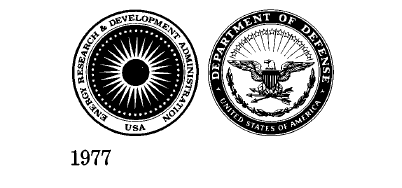
CHAPTER I—General Principles of Nuclear Explosions
Characteristics of Nuclear Explosions
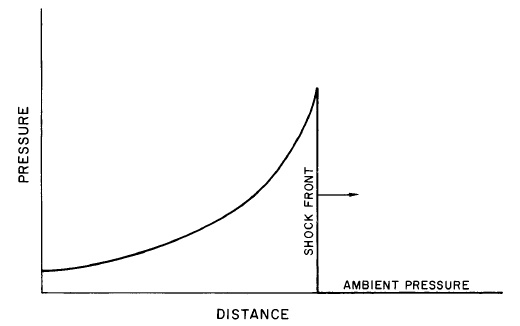
The characteristic of a shock wave is that there is (ideally) a sudden increase of pressure at the front, with a gradual decrease behind it, as shown in Fig. 1.01. A shock wave in air is generally referred to as a "blast wave" because it resembles and is accompanied by a very strong wind. In water or in the ground, however, the term "shock" is used, because the effect is like that of a sudden impact.
Scientific Basis of Nuclear Explosions
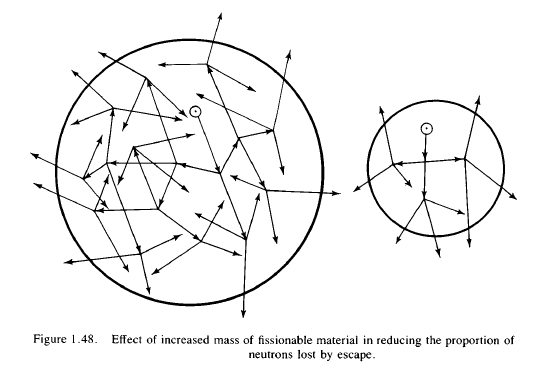
Fig. 1.48 shows two spherical masses, one larger than the other, of fissionable material of the same density. Fission is initiated by a neutron represented by a dot within a small circle. It is supposed that in each act of fission three neutrons are emitted; in other words, one neutron is captured and three are expelled. The removal of a neutron from the system is indicated by the head of an arrow. Thus, an arrowhead within the sphere means that fission has occurred and extra neutrons are produced, whereas an arrowhead outside the sphere implies the loss of a neutron. It is evident from Fig. 1.48 that a much greater fraction of the neutrons is lost from the smaller than from the larger mass.
CHAPTER II Descriptions of Nuclear Explosions
Introduction
Description of Air and Surface Bursts
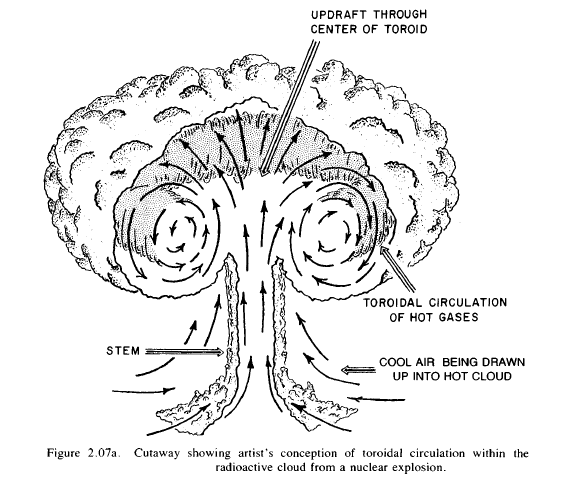
Depending on the height of burst of the nuclear weapon and the nature of the terrain below, a strong updraft with inflowing winds, called "afterwinds," is produced in the immediate vicinity. These afterwinds can cause varying amounts of dirt and debris to be sucked up from the earth's surface into the radioactive cloud (Fig. 2.07b).
Description of High-Altitude Bursts
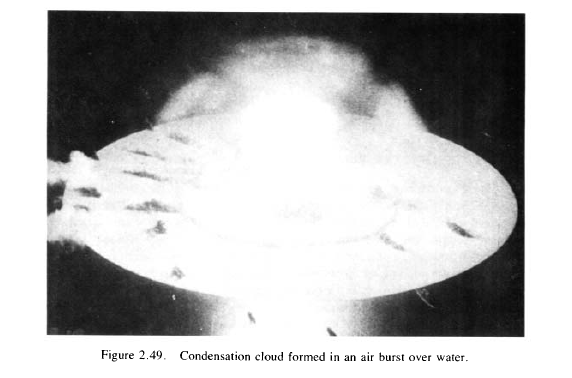 |
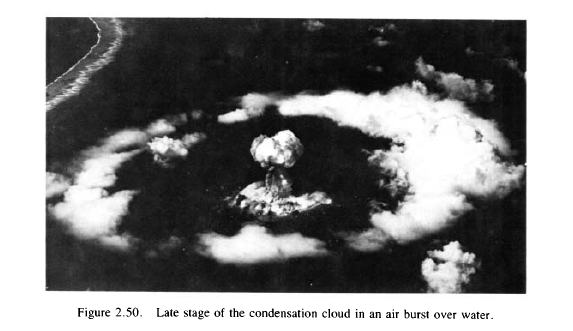 |
Description of Underwater Bursts
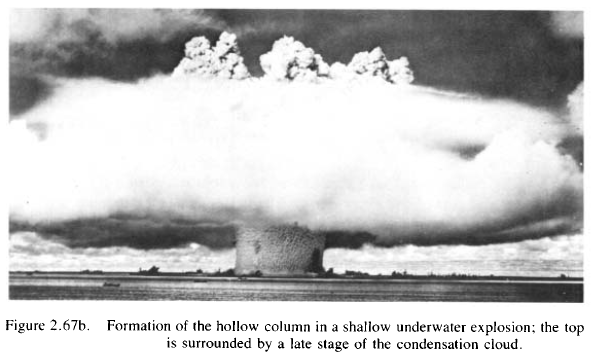 |
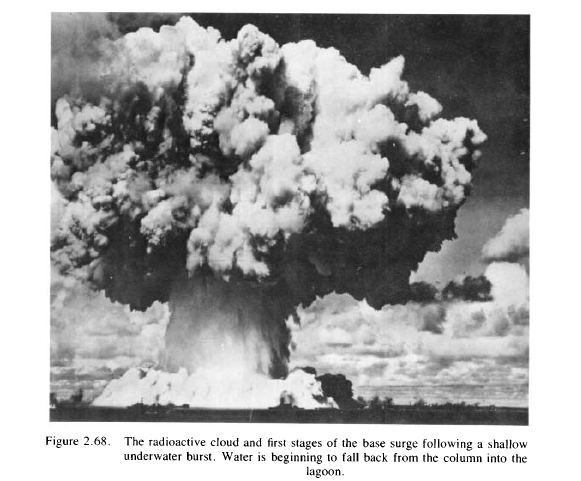 |
Description of Underground Bursts
Scientific Aspects of Nuclear Explosion Phenomena
CHAPTER III Air Blast Phenomena in Air and Surface Bursts
Characteristics of the Blast Wave in Air
Reflection of Blast Wave at a Surface
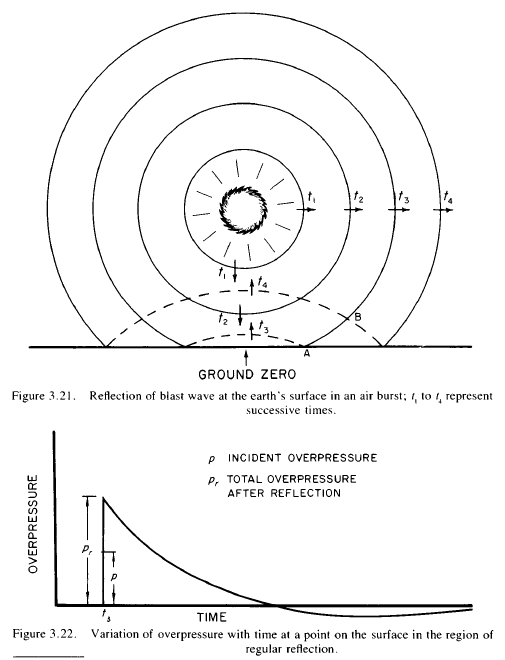
For a smooth (or ideal) surface, the total reflected overpressure in the region near ground zero will be more than twice the value of the peak overpressure of the incident blast wave. The exact value of the peak reflected pressure will depend on the strength of the incident wave (§ 3.56) and the angle at which it strikes the surface. The nature of the surface also has an important effect, but for the present the surface is assumed to be smooth so that it acts as an ideal reflector. The variation in overpressure with time, as observed at a point actually on the surface not too far from ground zero, such as A in Fig. 3.21, is depicted in Fig. 3.22 for an ideal shock front. The point A may be considered as lying within the region of "regular" reflection, i.e., where the incident and reflected waves do not merge except on the surface.
Modification of Air Blast Phenomena
Technical Aspects of Blast Wave Phenomena
CHAPTER IV—Air Blast Loading
Interaction of Blast Wave with Structures
Interaction of Objects with Air Blast
CHAPTER V—Structural Damage from Air Blast
Introduction
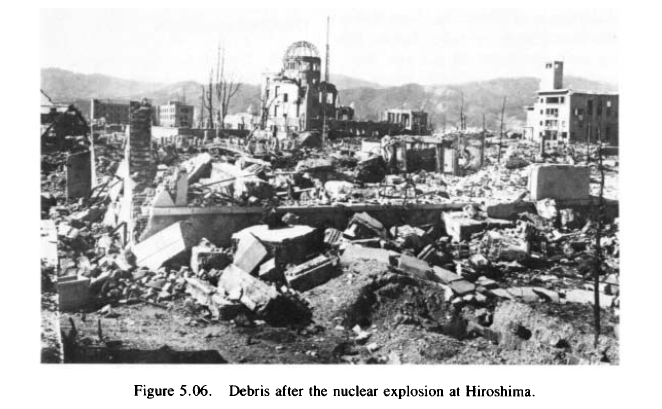
A highly important consequence of the tremendous power of the nuclear explosions was the formation of enormous numbers of flying missiles consisting of bricks (and other masonry), glass, pieces of wood and metal, etc. These caused considerable amounts of secondary damage to structures and utilities, and numerous casualties even in the lightly damaged areas. In addition, the large quantities of debris resulted in the blockage of streets, thus making rescue and fire-fighting operations extremely difficult (Fig. 5.06).
Factors Affecting Response
Commercial and Administrative Structures
Industrial Structures
Residential Structures
Transportation
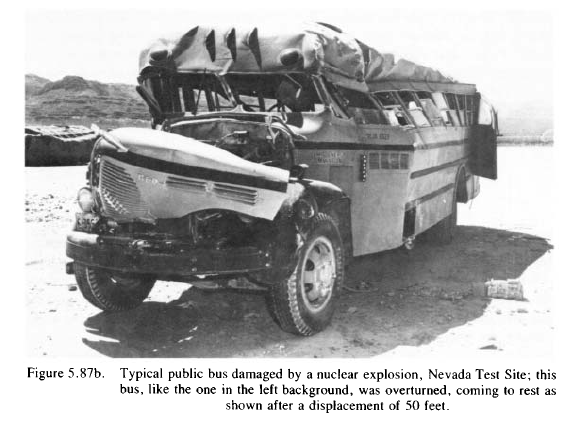 |
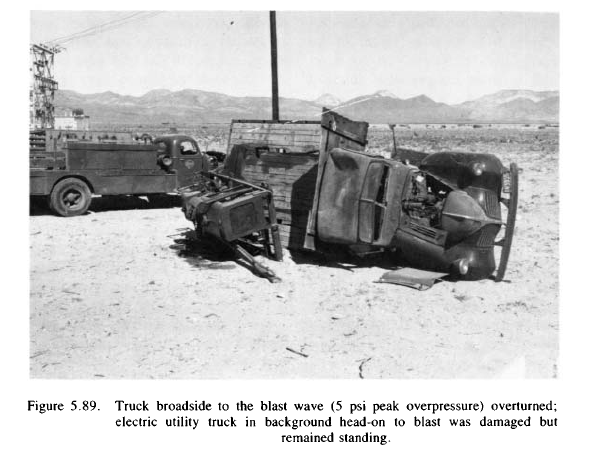 |
Utilities
Miscellaneous Targets
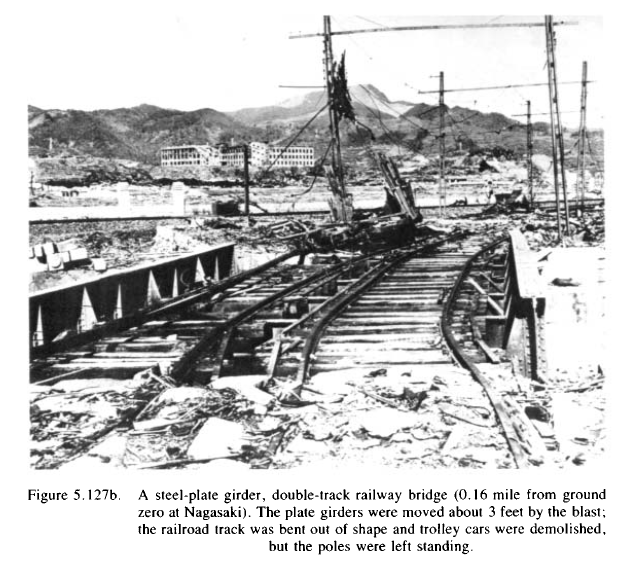 |
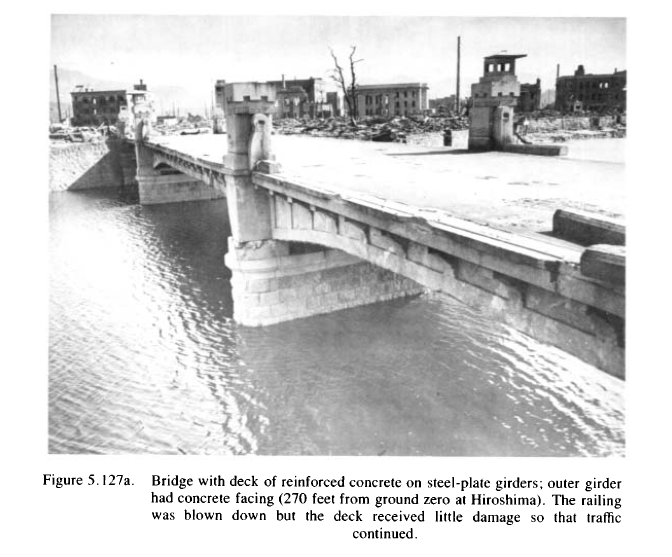 |
Analysis of Damage from Air Blast
CHAPTER VI—Shock Effects of Surface and Subsurface Bursts
Characteristics of Surface and Shallow Underground Bursts
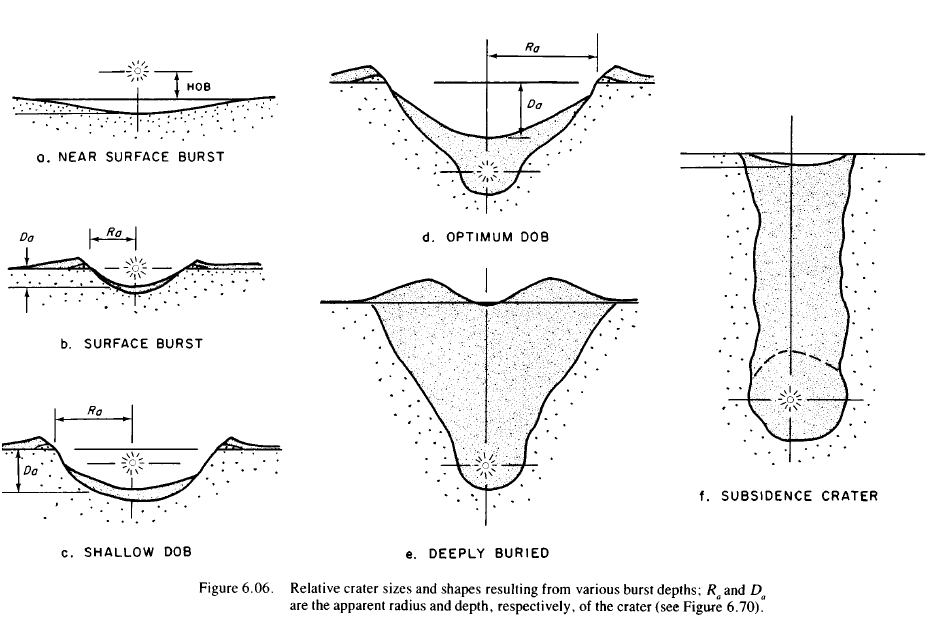
Deep Underground Bursts
Damage to Structures
Characteristics of Underwater Bursts
Technical Aspects of Surface and Underground Bursts
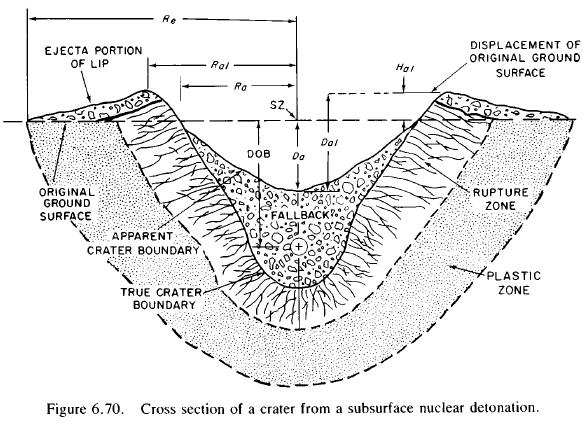 |
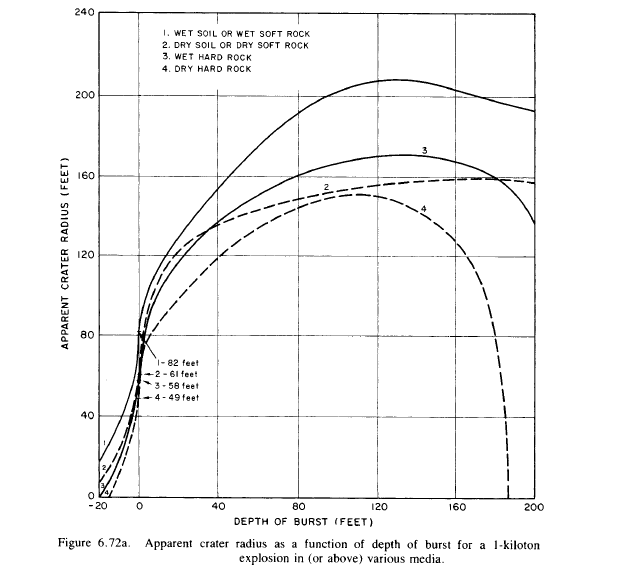 |
Technical Aspects of Deep Underground Bursts
Loading on Buried Structures
Damage from Ground Shock
Technical Aspects of Underwater Bursts
CHAPTER VII Thermal Radiation and Its Effects
Radiation from the Fireball
Thermal Radiation Effects
 |
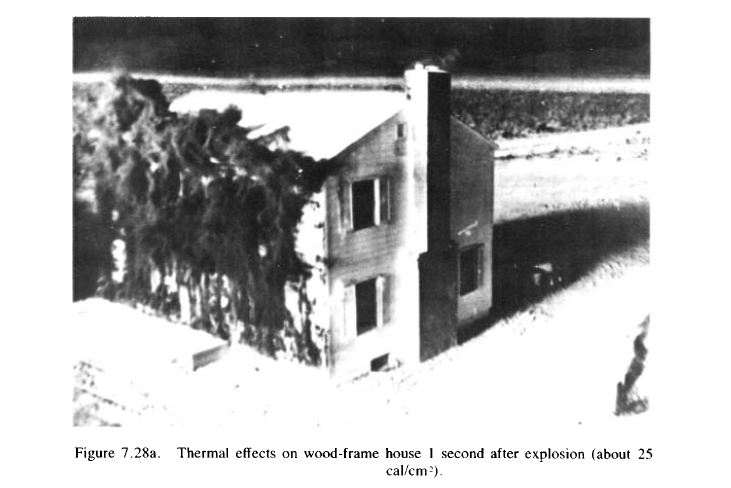 |
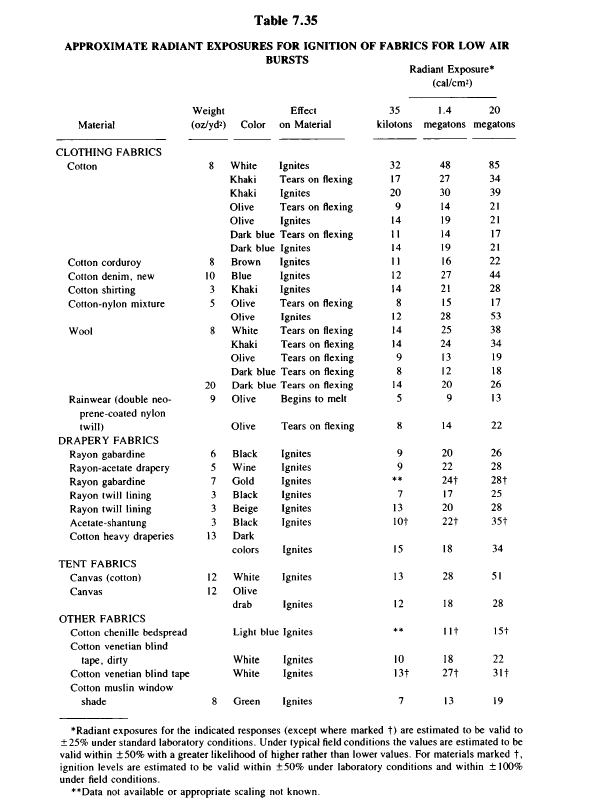 |
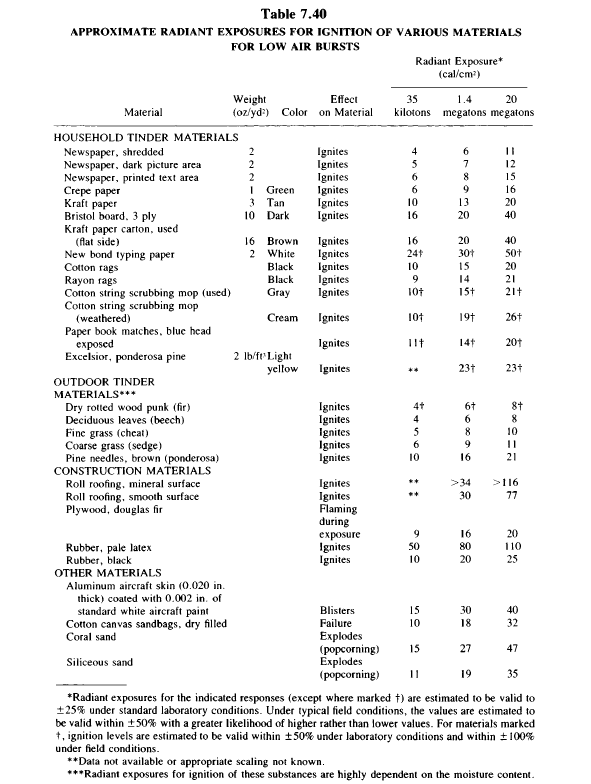 |
Incendiary Effects
Incendiary Effects in Japan
Technical Aspects of Thermal Radiation
Radiant Exposure–Distance Relationships
CHAPTER VIII Initial Nuclear Radiation
Nature of Nuclear Radiations
Gamma Rays
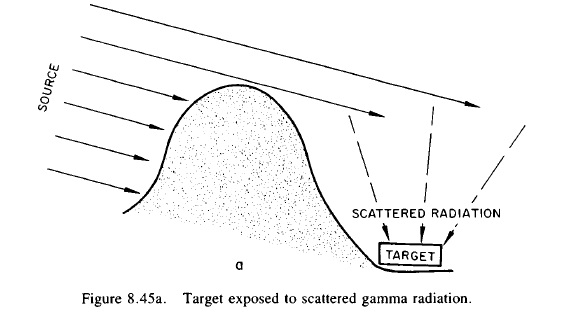 |
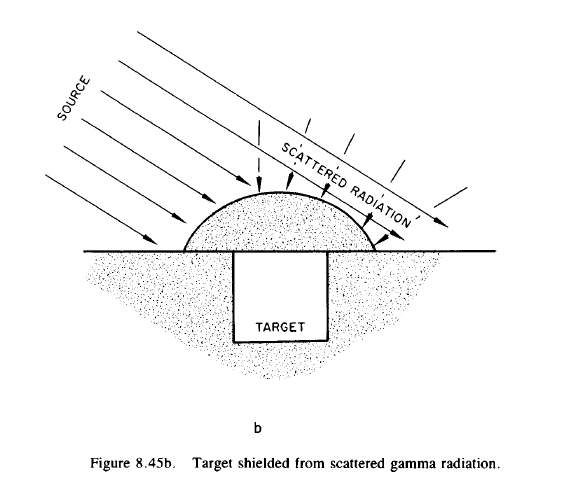 |
Neutrons
Transient-Radiation Effects on Electronics (TREE)
Technical Aspects of Initial Nuclear Radiation
CHAPTER IX—Residual Nuclear Radiation and Fallout
Sources of Residual Radiation
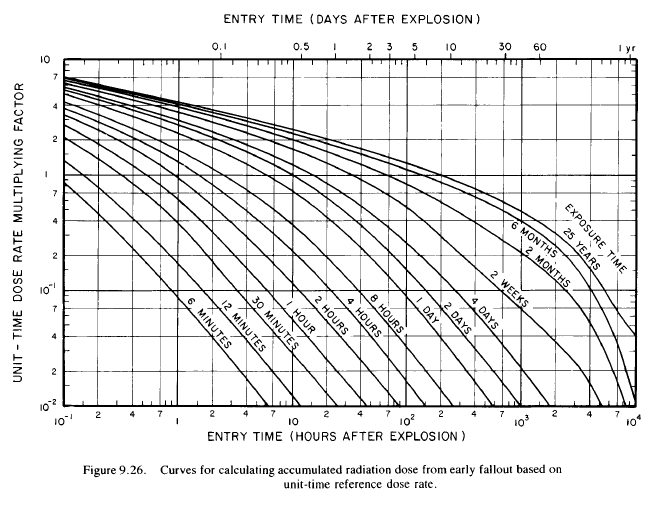 |
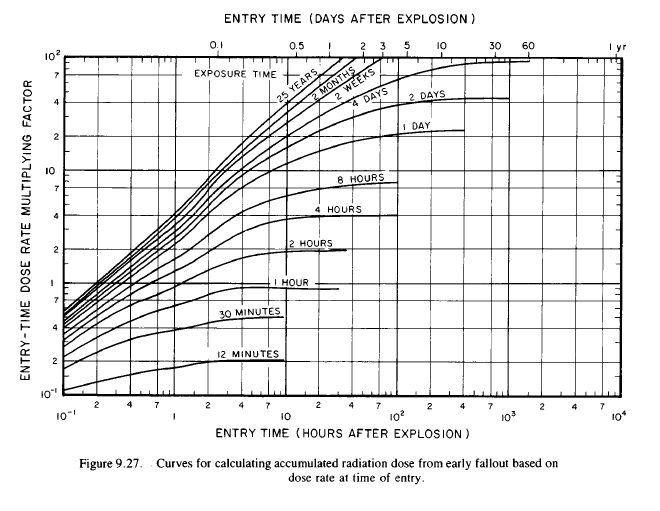 |
Radioactive Contamination from Nuclear Explosions
Fallout Distribution in Land Surface Bursts
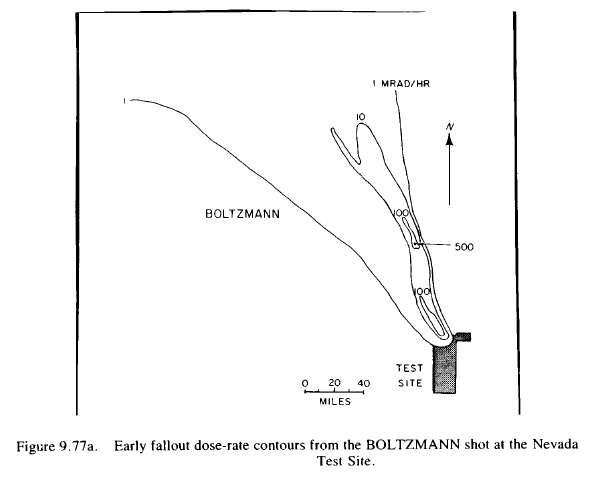 |
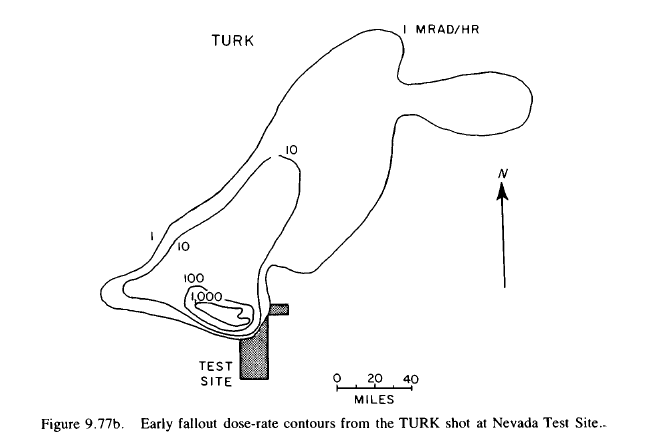 |
Fallout Predictions for Land Surface Bursts
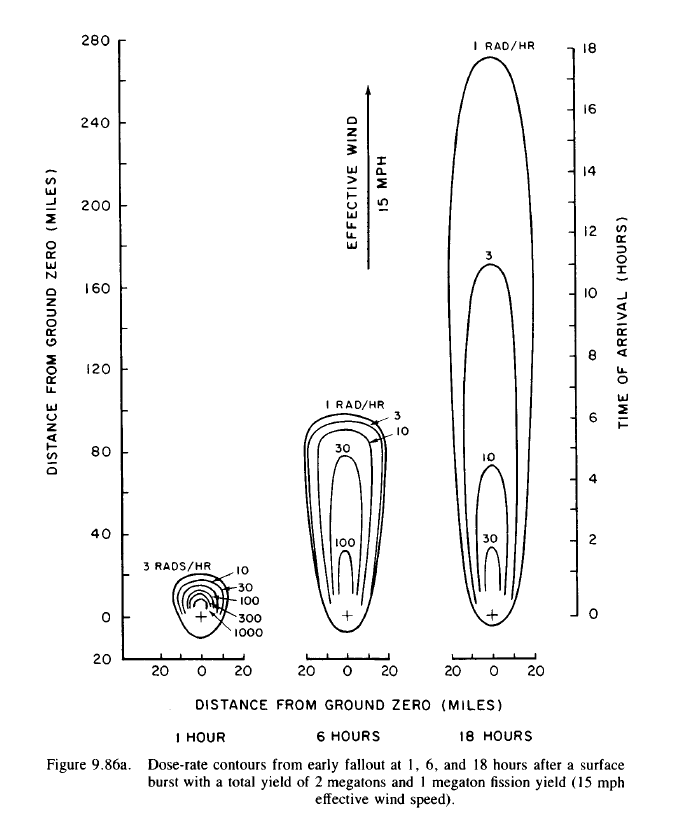 |
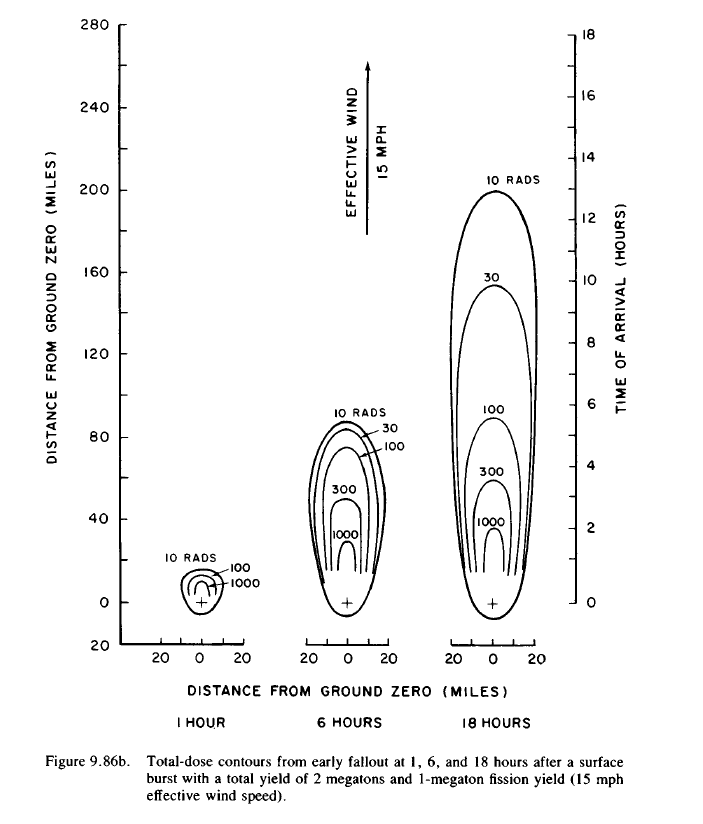 |
Attenuation of Residual Nuclear Radiation
Delayed Fallout
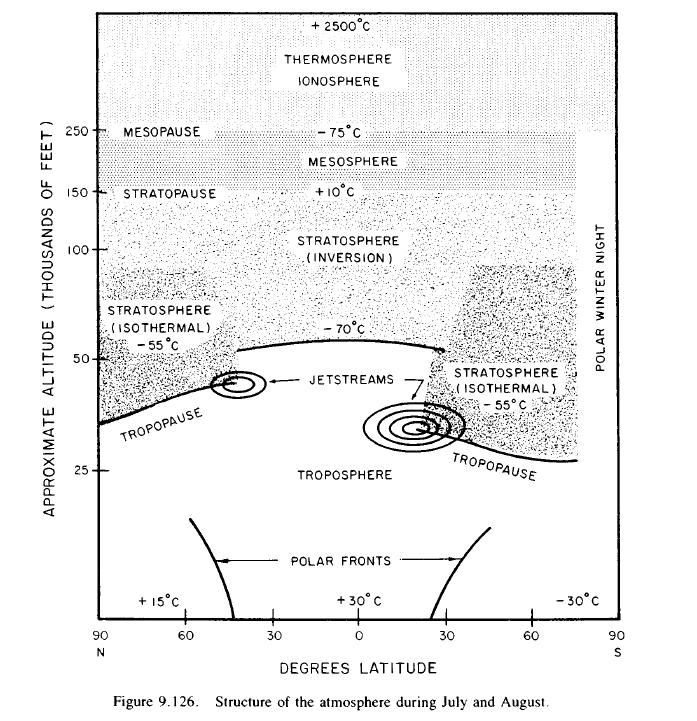 |
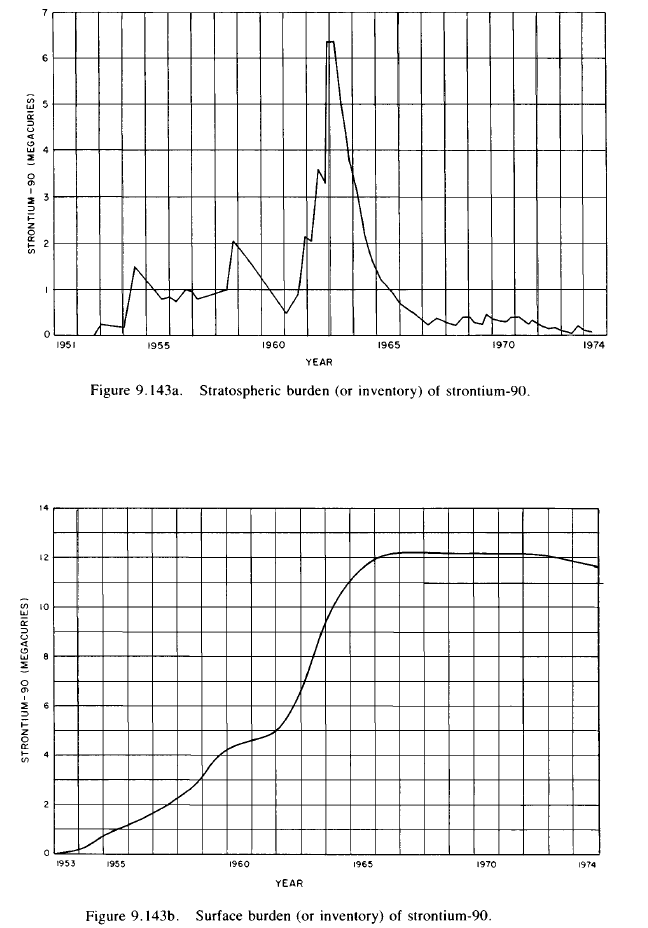 |
Technical Aspects of Residual Nuclear Radiation
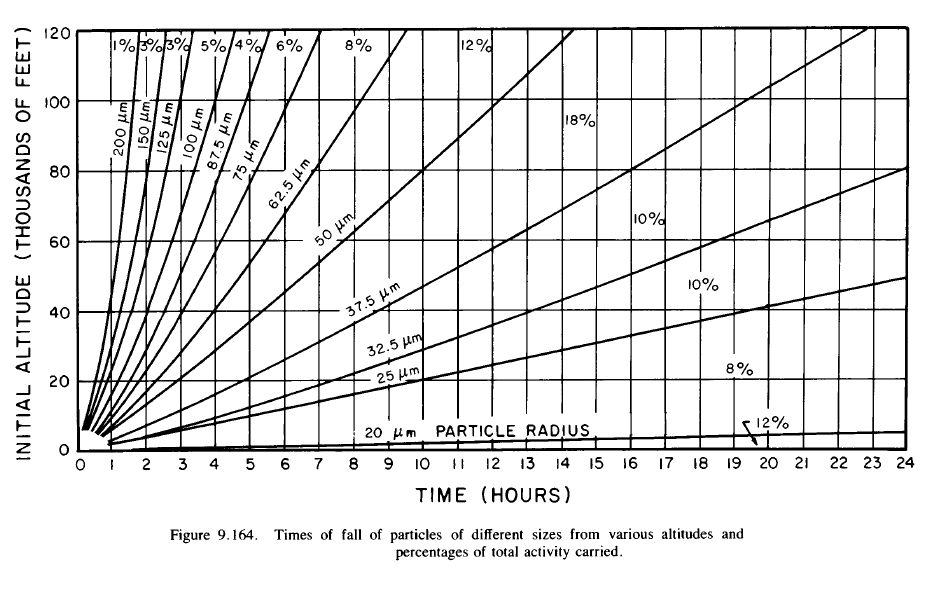
CHAPTER X—Radio and Radar Effects
Introduction
Atmospheric Ionization Phenomena
Ionization Produced by Nuclear Explosions
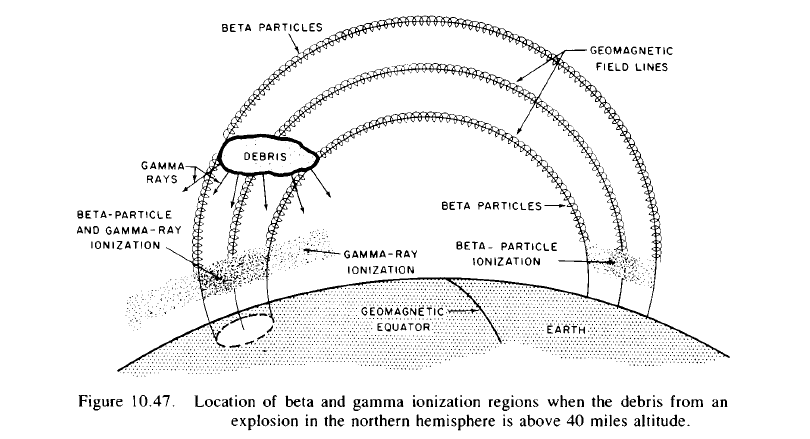
Effects on Radio and Radar Signals
Technical Aspects of Radio and Radar Effects
CHAPTER XI—The Electromagnetic Pulse and its Effects
Origin and Nature of the EMP
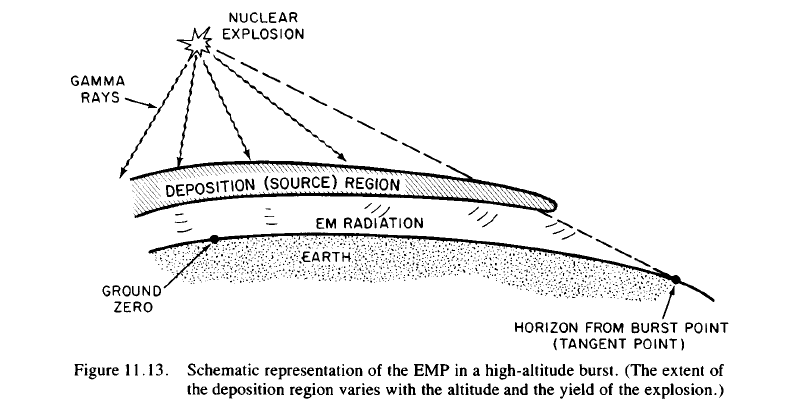
EMP Damage and Protection
Theory of the EMP
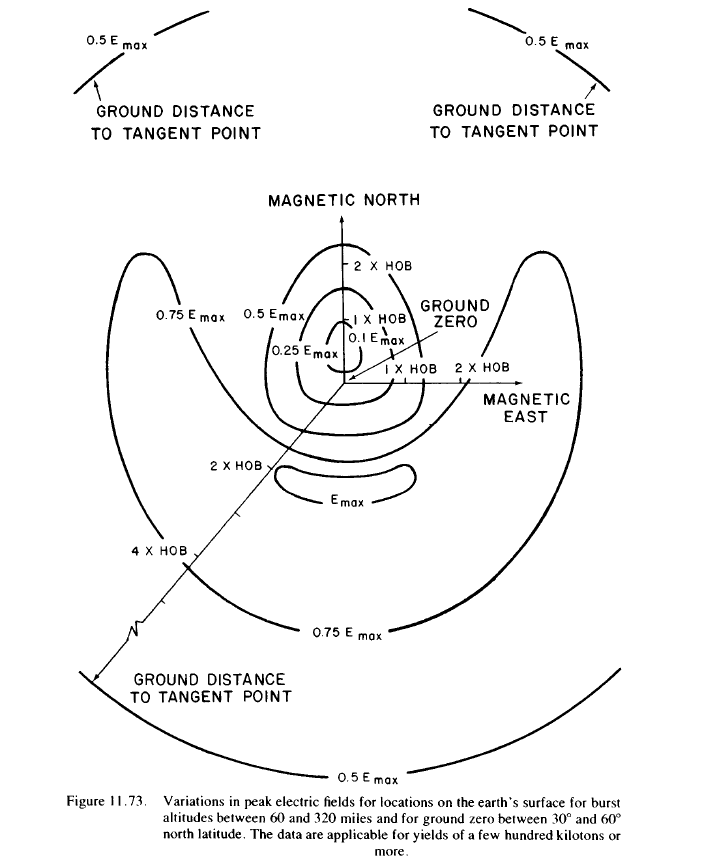
CHAPTER XII—Biological Effects
Introduction
Blast Injuries
Burn Injuries
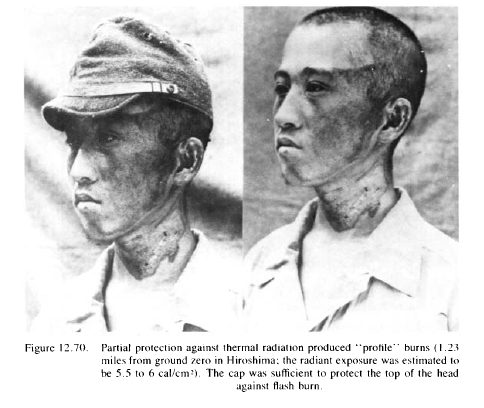 |
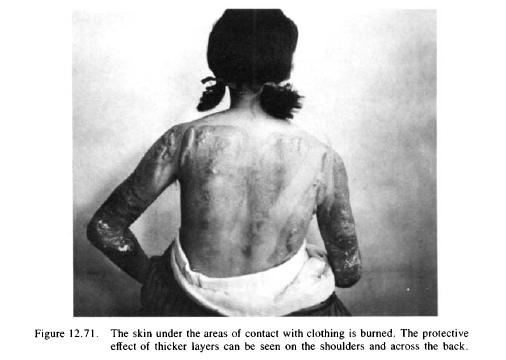 |
 |
Nuclear Radiation Injury
Characteristics of Acute Whole-Body Radiation Injury
Combined Injuries
Late Effects of Ionizing Radiation
Effects of Early Fallout
Long-Term Hazard from Delayed Fallout
Genetic Effects of Nuclear Radiation
Pathology of Acute Radiation Injury
Blast-Related Effects
Effects on Farm Animals and Plants
Glossary
Guide to SI Units
Index

The Effects of Nuclear Weapons—Glasstone and Dolan $77.99
The classic book on the effects of Nuclear Weapons, written with extreme scientific detail, is a MUST HAVE for anyone working in Homeland Security, Emergency Services or in any other Civil Defense capacity. The Effects of Nuclear Weapons also comes with the bomb computer!! With the book and the circular bomb computer (similar to a circular slide ruler) you can KNOW the effects of a weapon at any distance, including blast speed, overpressure, prompt radiation, thermal radiation, fall out values and timeline, along with everything else. It can even tell you potential crater sizes. The reverse is true as well. If terrorists were to set off a nuke on the ground, measurement of the crater would indicate the yield of the weapon used. Glass windows broken at X miles away would also indicate the yield of the device with this book and the bomb computer. This book is especially important for information services that must be able to provide accurate information in the aftermath of a NUCLEAR ATTACK. If you want to know what a 5 Kiloton stolen Soviet suitcase nuke would do, this book will tell you without requiring that you know everything that nuclear scientists know. Knowledge Publications is PROUD and HAPPY to put this book back into print at the high quality that we demand of ourselves. We are also delighted to provide the Bomb Computer to our customers. The Bomb Computer comes in a kit form. You just have to cut it out and fold it. It’s really easy—does not take a nuclear scientist to do it :)
